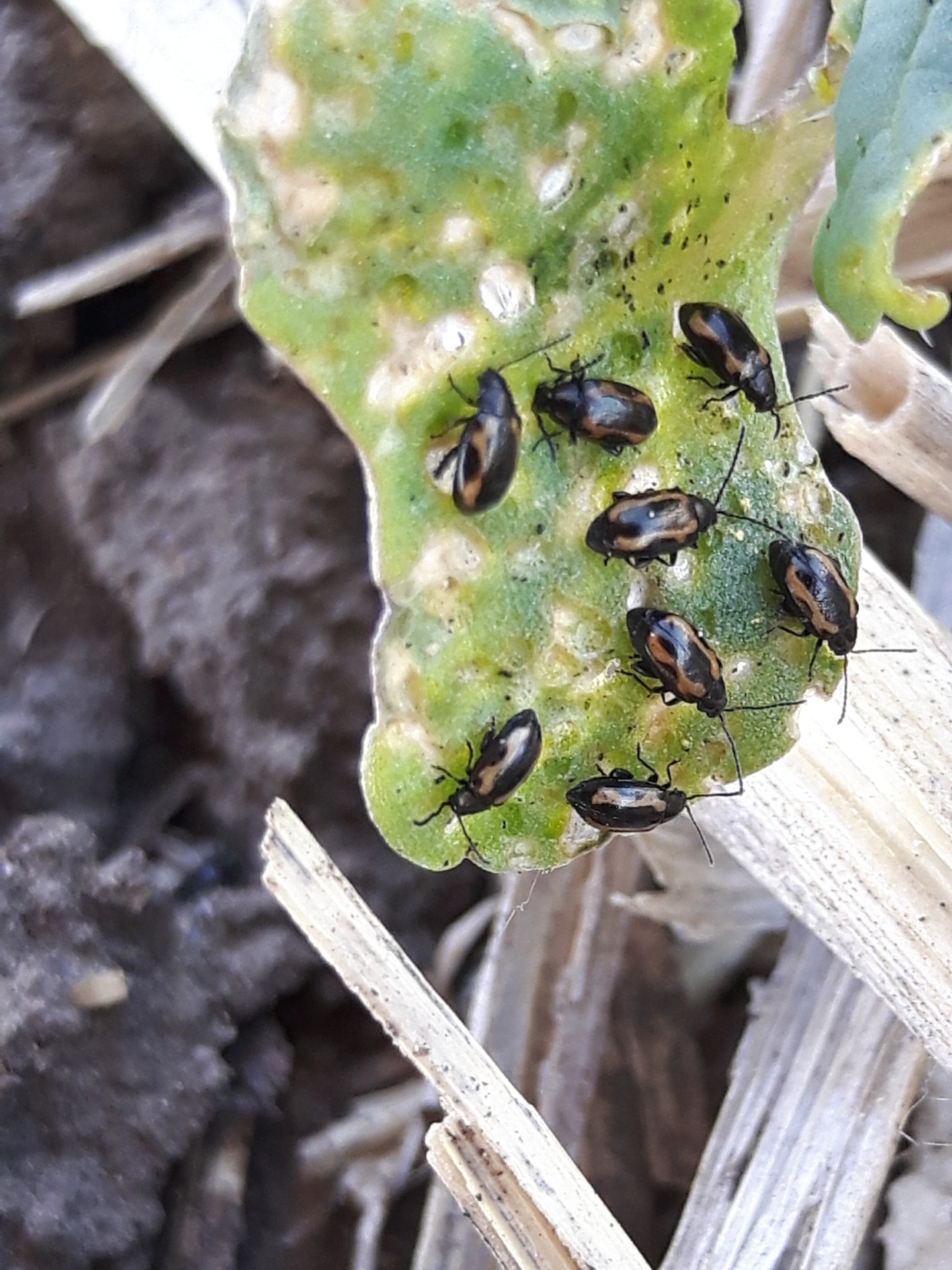The best defence against flea beetles in canola is a fast-growing, uniformly emerging crop with five to eight plants per square foot that quickly reaches the four-leaf stage. However, unpredictable weather often forces growers to rely on plan B: foliar sprays.
To reduce the need for multiple sprays, consider these strategies.
Spray when flea beetles are active
Ideal spraying conditions are warm, dry, and calm — when flea beetles are most active and feeding. During cool, rainy weather, flea beetles shelter in soil and feed less, which lowers insecticide efficacy.
Consider the temperature effect on insecticide efficacy
Temperature influences the performance of foliar sprays. Malathion and Sevin XLR are more effective in heat, with labels suggesting application during the hottest part of the day and at a minimum of 20°C.
In contrast, pyrethroids like Decis, Pounce, and Perm-UP are less effective above 25°C. If spraying in higher temperatures is necessary, mitigate risks with higher water volumes, make the correct nozzle choice and boom height adjustments to reduce evaporative losses and spray during cooler parts of the day. Historical research (Harris and Kinoshita, 1977) shows pyrethroids are 2.6 times more potent at 15°C than at 32°C.
Set a realistic threshold
In high-risk areas where growth is stalled and beetle activity is high, spraying before the 25% leaf area loss threshold may be advised. Still, some feeding is necessary for seed treatments to be effective, so spraying too early can limit their benefit.
![]()
Ensure coverage
Most foliar sprays for flea beetles work through contact, making uptake through ingestion of insecticide on canola tissues a “bonus”. Spray with at least 10 gallons of water per acre. Use appropriate nozzles — typically medium — to ensure proper droplet size. Avoid tank-mixing your foliar sprays with herbicides unless label guidelines support it, as coarse droplets from low-drift herbicide nozzles can reduce insecticide effectiveness.
Target foliar sprays to field edges
Flea beetles in Western Canada winter as adults in sheltered areas, preferably with lots of foliage, and emerge from late April to early June. Adults will fly to find the first-emerging canola crops. In stressed crops, spraying borders or small areas twice may be faster and more cost-effective than one full-field application. If scouting indicates heavy flea beetle pressure along one side of a field, spraying only that area can be enough – as long as it’s done quickly after scouting. Within a day, flea beetles can spread through the rest of the field.
Note the permitted applications per year for each product
Insecticides have restrictions on the number of applications per field per year. For example, Decis can be applied three times, Pounce and Sevin XLR can be applied two times, and malathion can be applied only once. For growers anticipating more than one insect pest of concern each season, have a product plan to effectively manage pests and stay within label restrictions.
For more on flea beetle management tips and how to make the spray decision, check out our Canola Watch fundamentals article: Flea beetles: Management tips. While there, please sign
Keith Gabert is an agronomy specialist with the Canola Council of Canada
